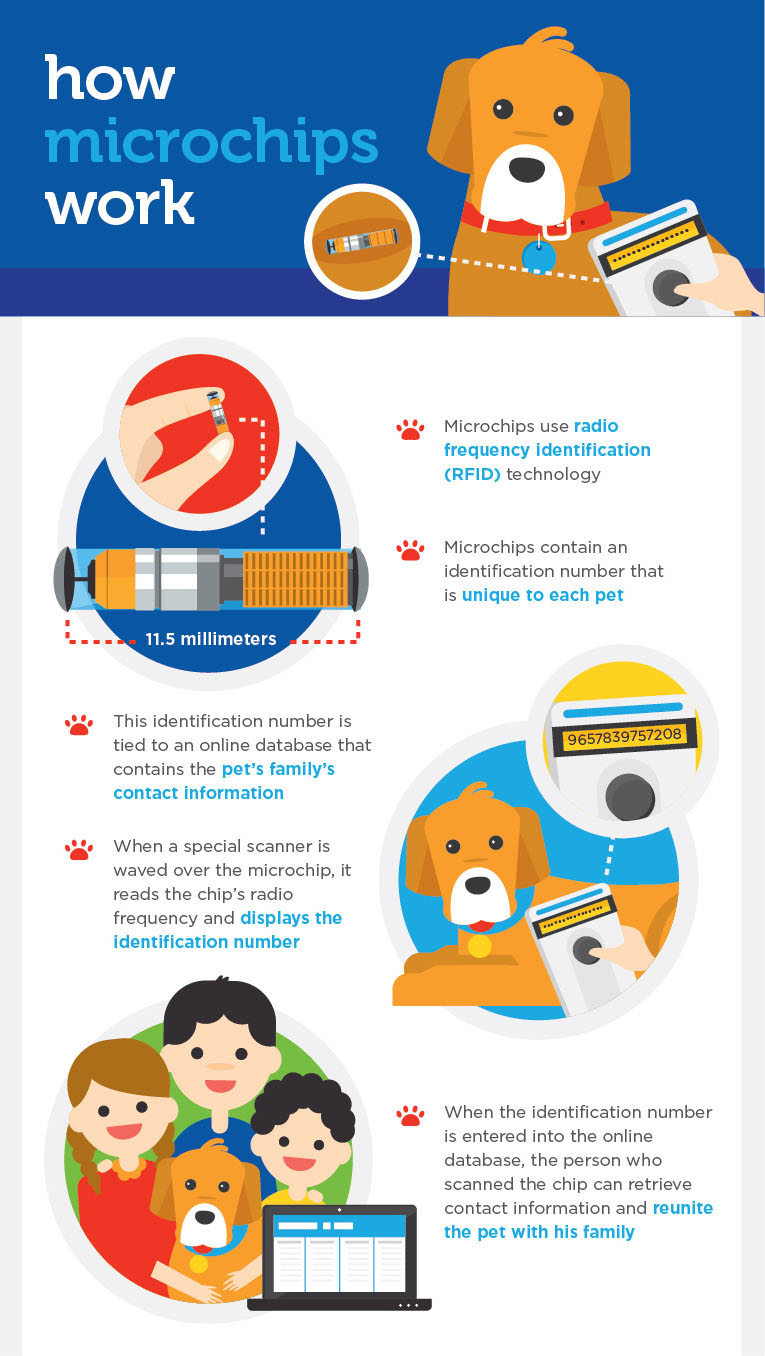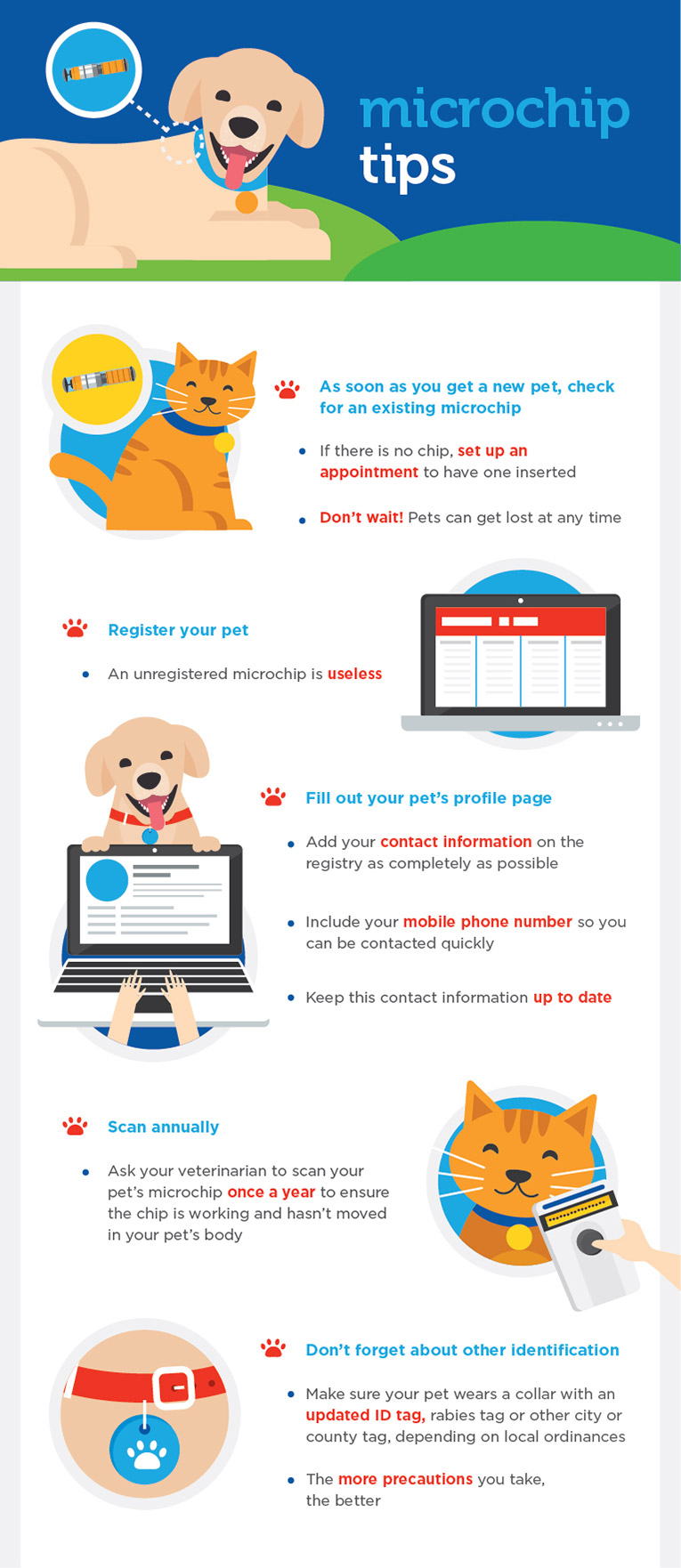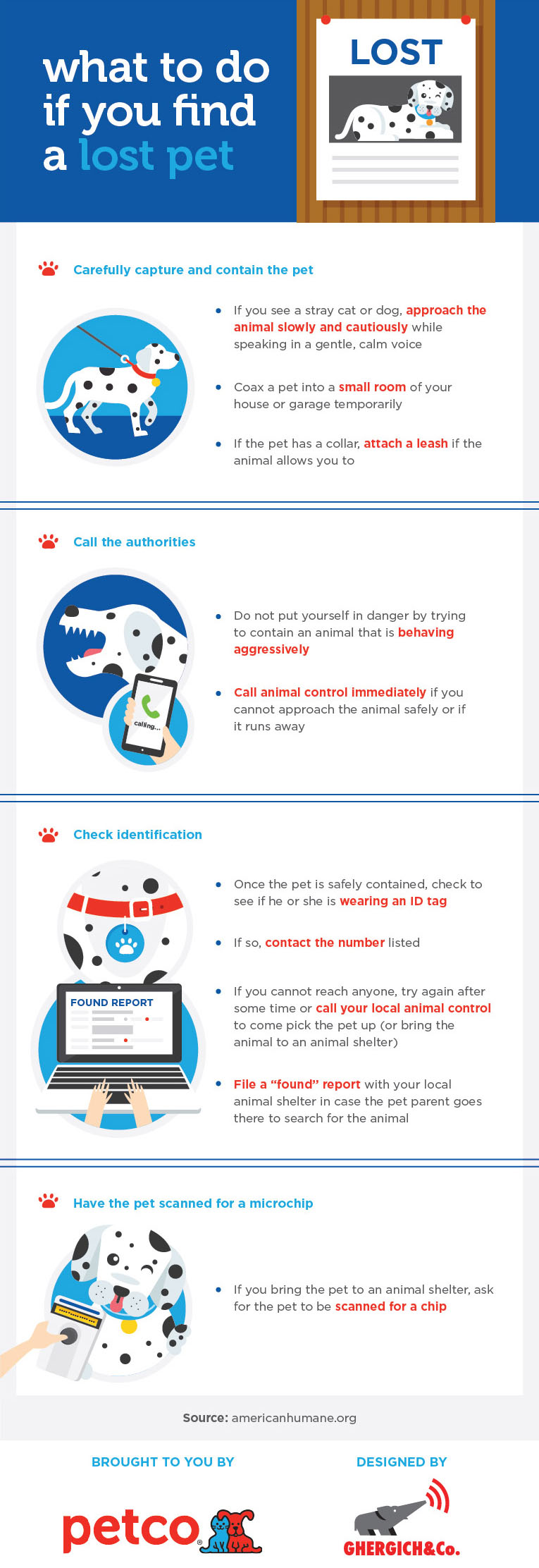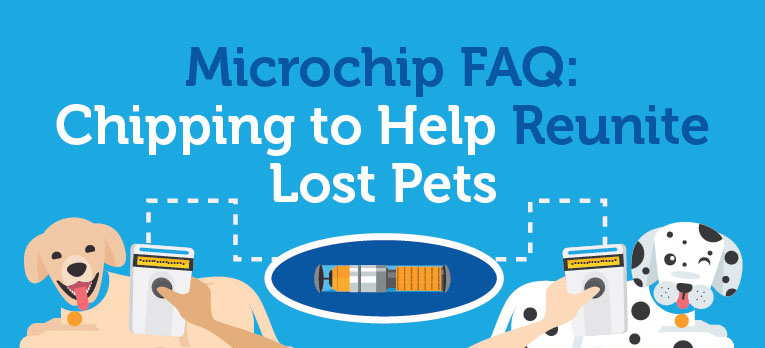Imagine losing your dog only to be reunited with him three years later—thanks to a microchip. That’s what happened when one Texas family’s pup went missing from their yard. The Kelly family searched everywhere for their lost dog, Gucci. Shortly after, they had to move out of state. “We were devastated,” Ayana Kelly told The Virginian Pilot. “We really felt like we left a family member behind.”
But three years later, they got a call from a San Antonio animal shelter that Gucci was alive and well and in their care. The shelter had scanned the dog and found the Kellys’ contact information. Soon, Gucci was back home with his loving family.
For a pet parent, losing a pet is one of the scariest things that can happen. Fortunately there are precautions you can take to help make sure your beloved pet gets back home safely and quickly. A collar, ID tags and a microchip are a must to help identify pets and reunite them with their families should they go astray.
What is a microchip?
A microchip is a radio-frequency identification (RFID) device about the size of a grain of rice. These tiny devices contain an identification number that is unique to your pet and is tied to an online database that contains your contact information. When a special scanner is waved over the microchip, it reads the chip’s radio frequency and displays the identification number. Typically, a veterinarian’s office, animal shelter or law enforcement agency has a handheld scanner to use for this purpose.
When the number is entered into the online database, the person who scanned the chip can retrieve contact information and reunite the pet with his family. While there are several types or “frequencies” of microchips, universal microchip scanners—which can read different types of chips—are standard.

What kind of information does a microchip contain?
According to the American Veterinary Medical Association (AVMA), microchips only contain an ID number. The chip itself does not contain any contact information nor can it track a pet. When you register your pet in the database, you can decide to provide additional information about your pet beyond your contact information.
Which pets can be microchipped?
Most people know that dogs and cats can be microchipped, but they are not the only pets that can benefit. Other animals such as horses and rabbits can be microchipped too. Chips can even be used to monitor livestock in research facilities.
What is the microchipping process like?
The process is quick and usually painless. Using a hypodermic needle, microchips are implanted between the shoulder blades under the animal’s skin. General anesthesia is not necessary for this simple procedure, though local anesthesia is sometimes used.
Do pets require any special care after a microchip is inserted?
Within about 24 hours, the pet’s tissues usually bond to the chip so it stays in place. (In rare instances, the chip can migrate to another part of the pet’s body. The microchip can still be detected if the person performing the scan passes over another area of the body.) Allow the microchip insertion site to fully heal before bathing or grooming your pet.

How can I get my pet microchipped?
Most veterinarians or animal shelters implant microchips. The procedure cost can vary. Vetco microchips dogs and cats for $15 with no registration fee. Some shelters and clinics offer low cost or free microchipping clinics too. If you want to find the best price, be sure to ask your veterinarian or local shelter about any upcoming specials or events.
How do I register my pet’s microchip?
When your pet is microchipped, you should receive manufacturer information and the microchip number. You can visit the manufacturer’s website to register your pet and input your contact information.
Most registries charge a registration fee and, sometimes, an annual maintenance fee to keep the information up to date. Organizations like foundanimals.org and freepetchipregistry.com do not charge a fee for microchip registration there are other similar types of universal registries in the works.
During a microchip scan, the information that pops up typically indicates which company registered the microchip. If not, there are other ways professionals can track down microchip registrations. For example, the American Animal Hospital Association has a special database that can quickly determine which company the microchip is registered through. To ensure a microchip does its job, it’s incredibly important to keep your pet’s microchip information up to date. (Always remember to update your contact information if you move or get a new phone number.)
What if my newly adopted pet already has a microchip?
If your new pet already has a chip, make sure to get the pet’s microchip number and manufacturer and update the contact information. If you don’t have the number, you can ask your veterinarian or local shelter to scan the animal for that information.
How do I find my pet if he or she is missing?
When a lost or stray pet comes into their care, shelter workers or animal control officers generally scan for a microchip first. Helpful people often bring lost pets to veterinarians’ offices or animal welfare organizations to have them scanned for a microchip. This simple procedure has reunited thousands of animals with their families.
If your pet’s microchip information is up to date, if someone scans your pet, they’ll have current contact information and be able to get in touch with you right away. Include your cell phone in the database information so you can be alerted immediately.
What kind of information does the microchip registry database include?
The database requires contact information, but you can also include a variety of other details such as your pet’s photo and description, your preferred veterinary clinic, and more.
How long do microchips last?
Microchips don’t have any moving parts or power source so there’s nothing that requires charging or replacing. They are also built out of biocompatible materials so they won’t break down. As a result, once the microchip is implanted in your pet, it should last your pet’s lifetime.
How can microchips help me reunite a lost dog with his family?
You can take the lost pet to a veterinarian or local shelter and ask them to scan the pet for a microchip. Alternatively, you could call your local law enforcement agency to see if they have a chip scanner. If the pet has a microchip, the veterinarian or shelter worker retrieves the microchip number, looks up the registered contact information and gets in touch with the pet’s family.
Do microchips really work?
Yes. According to a study by the Ohio State University Department of Preventative Veterinary Medicine, out of 53 shelters that recorded information on 7,704 animals entering a shelter with a microchip, 73% of the families of stray dogs and cats were successfully located (74% for dogs and 63.5% for cats).
But remember, you have to register and keep your information updated. In the same study, researchers discovered that one of the most common reasons pet parents weren’t successfully contacted was due to incorrect or non-working phone numbers (35.4%). And roughly one out of 10 of microchips weren’t registered.

As a pet parent, it’s your responsibility to care for your pet. That includes taking steps to help your dog or cat get back home should it go missing. Investing a bit of time and money into microchipping your pet can make all the difference in the event of an emergency.
Article reposted from:
https://community.petco.com/t5/Blog/Microchip-FAQ-Chipping-to-Help-Reunite-Lost-Pets/ba-p/72459
By CarolineGolon


Recent Comments